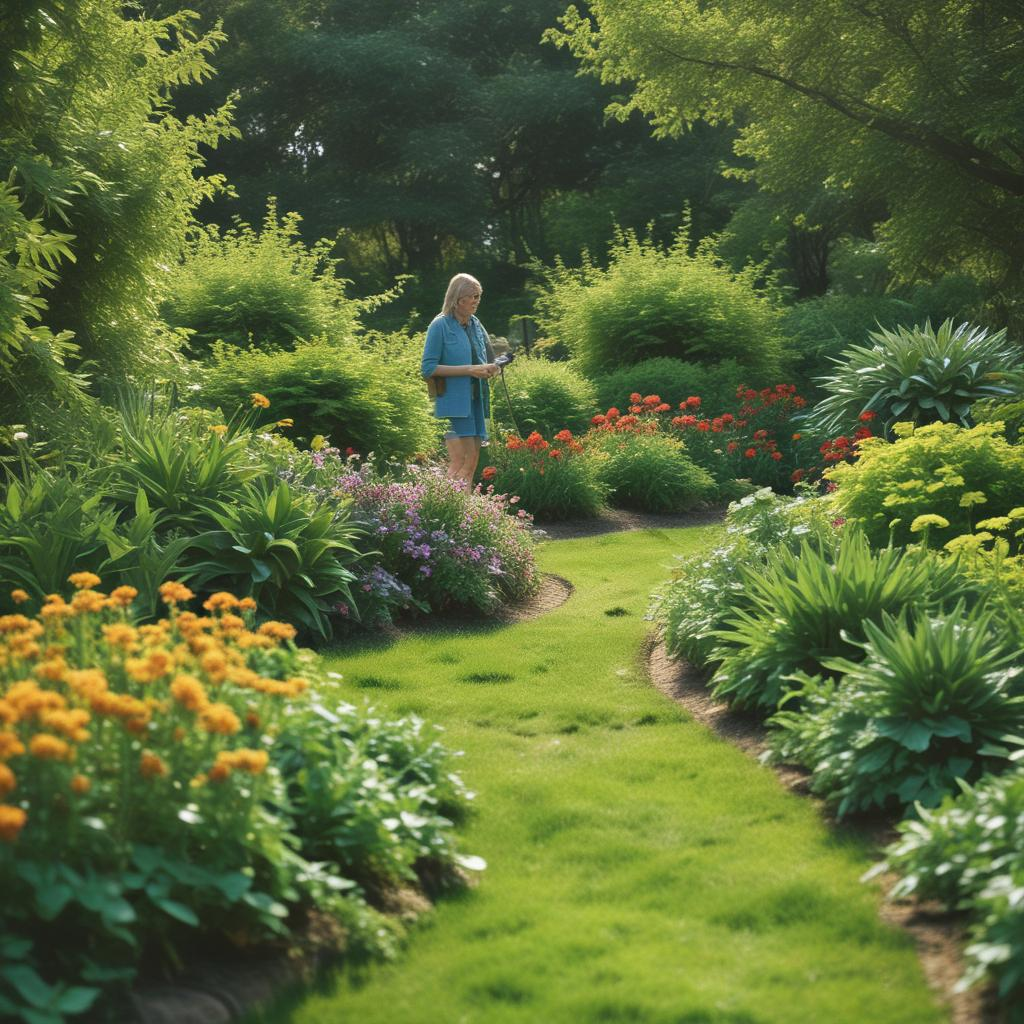Gardening is a timeless and rewarding activity that connects us with nature and brings beauty into our lives. Whether you have a spacious backyard, a small balcony, or even just a windowsill, gardening offers numerous benefits for both mental and physical well-being. In this blog post, we will explore the joys of gardening, the benefits it provides, and practical tips for getting started with your own green space.

The Benefits of Gardening
1. Mental Health and Well-being: Gardening has been shown to reduce stress, anxiety, and depression. The act of tending to plants and being surrounded by nature promotes a sense of calm and relaxation. It also provides a sense of accomplishment and purpose, boosting self-esteem and overall happiness.
2. Physical Health: Gardening is a great form of physical exercise. It involves activities such as digging, planting, weeding, and watering, which can improve strength, stamina, and flexibility. Spending time outdoors also increases vitamin D levels, which is essential for bone health and immune function.
3. Environmental Impact: Growing your own plants, especially vegetables and herbs, reduces the need for commercially grown produce, which often involves harmful pesticides and transportation emissions. Gardening also supports local biodiversity by providing habitats for pollinators like bees and butterflies.
4. Nutritional Benefits: Homegrown fruits, vegetables, and herbs are fresher, tastier, and more nutritious than store-bought varieties. You have control over the use of pesticides and fertilizers, ensuring that your produce is organic and healthy.
5. Connection to Nature: Gardening fosters a deeper connection to the natural world. It encourages mindfulness and an appreciation for the cycles of growth and change. This connection can lead to a greater sense of environmental stewardship and a desire to protect and preserve the planet.
Getting Started with Gardening
1. Assess Your Space: Determine the amount of space you have available for gardening. Whether it's a large garden, a small balcony, or a windowsill, you can tailor your gardening efforts to fit your environment. Consider the amount of sunlight your space receives, as this will influence the types of plants you can grow.
2. Choose Your Plants: Select plants that are suitable for your space, climate, and level of experience. Beginners may want to start with easy-to-grow plants such as herbs (basil, mint, rosemary), vegetables (tomatoes, lettuce, radishes), or flowers (marigolds, pansies, sunflowers). Research the specific needs of each plant, including sunlight, water, and soil requirements.
3. Gather Your Tools: Basic gardening tools include a trowel, pruners, a watering can or hose, gardening gloves, and pots or containers if you are gardening in a limited space. Investing in good-quality tools can make gardening more enjoyable and efficient.
4. Prepare the Soil: Healthy soil is the foundation of a successful garden. If you are gardening in the ground, test your soil to determine its pH and nutrient levels. Amend the soil with compost or organic matter to improve its fertility and structure. For container gardening, use a high-quality potting mix.
5. Planting and Care: Follow the planting instructions for each type of plant, paying attention to spacing, depth, and watering needs. Regularly water your plants, keeping the soil consistently moist but not waterlogged. Fertilize as needed, and keep an eye out for pests and diseases.
6. Pruning and Maintenance: Regularly prune your plants to encourage healthy growth and remove dead or diseased parts. Weeding is essential to prevent competition for nutrients and water. Mulching can help retain moisture, suppress weeds, and improve soil health.
Advanced Gardening Tips
1. Companion Planting: Some plants benefit from being grown together. For example, planting basil near tomatoes can improve the flavor and growth of both. Research companion planting to maximize the health and productivity of your garden.
2. Vertical Gardening: If you have limited space, consider vertical gardening techniques such as trellises, hanging baskets, or wall-mounted planters. This method allows you to grow more plants in a smaller area and can add visual interest to your garden.
3. Seasonal Gardening: Learn about the growing seasons in your area and plan your garden accordingly. Rotate crops to maintain soil health and avoid planting the same type of plant in the same spot each year to reduce the risk of pests and diseases.
4. Rainwater Harvesting: Collect rainwater to use for watering your plants. This sustainable practice reduces your water bill and conserves a valuable resource. Set up a rain barrel or similar system to capture and store rainwater.
5. Composting: Create a compost pile or bin to recycle kitchen scraps and yard waste into nutrient-rich compost. This organic matter can be added to your garden soil to improve fertility and structure, reducing the need for chemical fertilizers.
Conclusion
Gardening is a fulfilling and therapeutic activity that offers a wide range of benefits for your mind, body, and environment. Whether you're a beginner or an experienced gardener, cultivating your own green space can bring joy, satisfaction, and a deeper connection to nature. Start small, be patient, and enjoy the process of watching your plants grow and thrive.


.jpg)






.jpg)



0 Comments